Frijid Pink | Interview | Drummer Rick Stevers
Rick Stevers began his musical odyssey in the 4th grade playing drums with his Grade School’s band. Next were his Middle School’s band and his High School’s Marching Band. By Christmas Eve 1963, Rick had his first paying gig at a corner bar. By 1967 his covers-and-originals band, the Detroit Vibrations, transformed into Frijid Pink.
Two years of hard touring throughout Southeast Michigan and The Great Lakes region of the U.S. consolidated Frijid Pink’s success with a record deal through Parrot Records, a division of London Records (Deram was another subsidiary). The label, which issued many British recordings, led to Decca Records releasing Frijid Pink’s first two singles, ‘Tell Me Why b/w Cryin’ Shame’ and ‘God Gave Me You b/w Drivin’ Blues’, in 1969—both appeared on their 1970 debut album.
Sure, Parrot’s biggest hit was ‘She’s a Lady’ recorded by a Welsh lad known as Tom Jones, which peaked at #2 on the U.S. ‘Billboard’ charts in 1971, but us hard rockers remember Frijid Pink as the first progressive-rock band from Michigan to receive a Gold Record: a blistering 45-rpm rendition of a traditional folk song known as ‘House of the Rising Sun’, which sold close to eight million copies—and recently celebrated its 52nd anniversary-release on March 28, 1970. That’s not too bad for a song that was an impromptu filler recording done in one take—propelled by Gary Ray Thompson’s then groundbreaking combination of fuzz and wah-wah pedals—which resulted from left over time at a recording session.
Paul Cannon, the father of Stevers’s then girlfriend, who served as the program director for Detroit’s WKNR, helped launch ‘House’ to worldwide acclaim. Making its debut on the station’s Top 30 playlist in January 1970, the song became a ‘Billboard’-charted U.S. hit that also reached the Top 10 in several European countries. In Germany, the song reached and remained at #1 on the charts for 11 weeks (thus, two career-spanning compilations were issued in Germany). Also reaching #3 in Canada, the song pushed their album to #11 on the U.S. Billboard Pop Album Chart.
While today’s critics dismiss the once multi-million selling Frijid Pink as one-hit wonders, those ex-Vibrations out of the Motor City were anything but a flash in the pan. Across four albums—‘Frijid Pink’, ‘Defrosted’ (1970), ‘Earth Omen’ (1972), and ‘All Pink Inside’ (1974)—drummer Rick Stevers and bassist Tom Harris, along with guitarist Gary Ray Thompson and lead singer Tom Beaudry (aka Kelly Green on record; along with other roster changes that left only Stevers and Tom Harris from the debut), Frijid Pink charted more, yet lesser-selling hits, such as ‘Sing a Song for Freedom’ and ‘Music for the People’, to a worldwide audience. While their next biggest single release, a thumped-up cover of Elvis Presley’s ‘Heartbreak Hotel’, may have paled in comparison to the multi-millions sold by ‘House of the Rising Sun’, the fuzzed-up reimaging still sold a respectable 750,000 copies to become the band’s second charting single—and earned the respects of Elvis and Colonel Tom Parker: so much so that they sent Christmas cars to the band up until the King’s 1977 death.
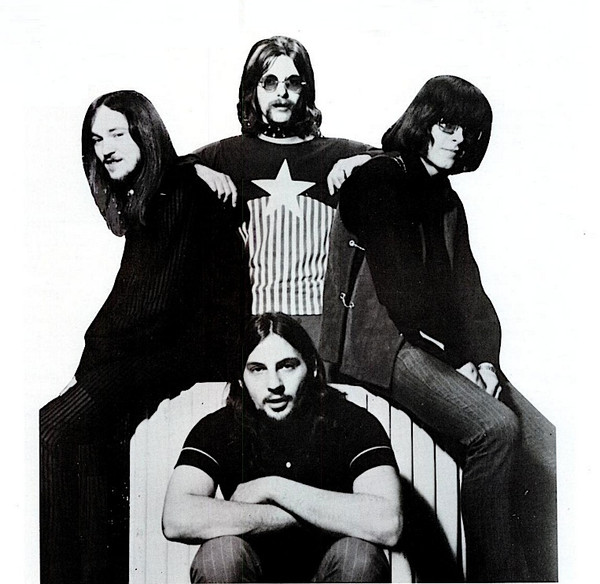
In addition to Presley’s fandom, the various incarnations of Frijid Pink shared stages with all of the expected music elites of Detroit, such as Alice Cooper, Dick Wagner’s Frost, Grand Funk Railroad, Suzi Quatro, Rare Earth, Mitch Ryder, Savage Grace, Bob Seger, Ted Nugent, and Iggy Pop and the Stooges. Then there are those national tours with the Doors, the Grass Roots, the Guess Who, Iron Butterfly, the James Gang, Jethro Tull, and Steppenwolf.
Since Frijid Pink’s chart-topping days, the band—with Rick Stevers forever at the helm—toured after their fourth and final album in 1975 and continued to tour up through 1979, with reformations in 1981, 2005, 2006, and 2008. The band came to release their long-awaited fifth album, ‘Frijid Pink, Frijid Pink, Frijid Pink’ (2011; featuring new originals and remakes of older tunes), quickly followed by ‘Frijid Pieces’ (2012; an EP of all-originals), ‘Made in Detroit’ (2014; 11 new-originals), ‘Taste of Pink’ (2017; a four-song EP), ‘On the Edge’ (2018; 14 new-originals), and ‘Hot Pink’ (2020; four-song EP of new originals).
Yes, it’s been 55 years and ten releases later—from their heavy psychedelia to blues rock to prog-rock stylings to their self-professed “New Classic Rock” since 2008—with Rick Stevers still beating the skins with Frijid Pink. He sits down with us to share a few war stories—a few you may know, but many you do not—from those five-plus decades. There are exclusives from the lips of Rick Stevers to be had with this interview!
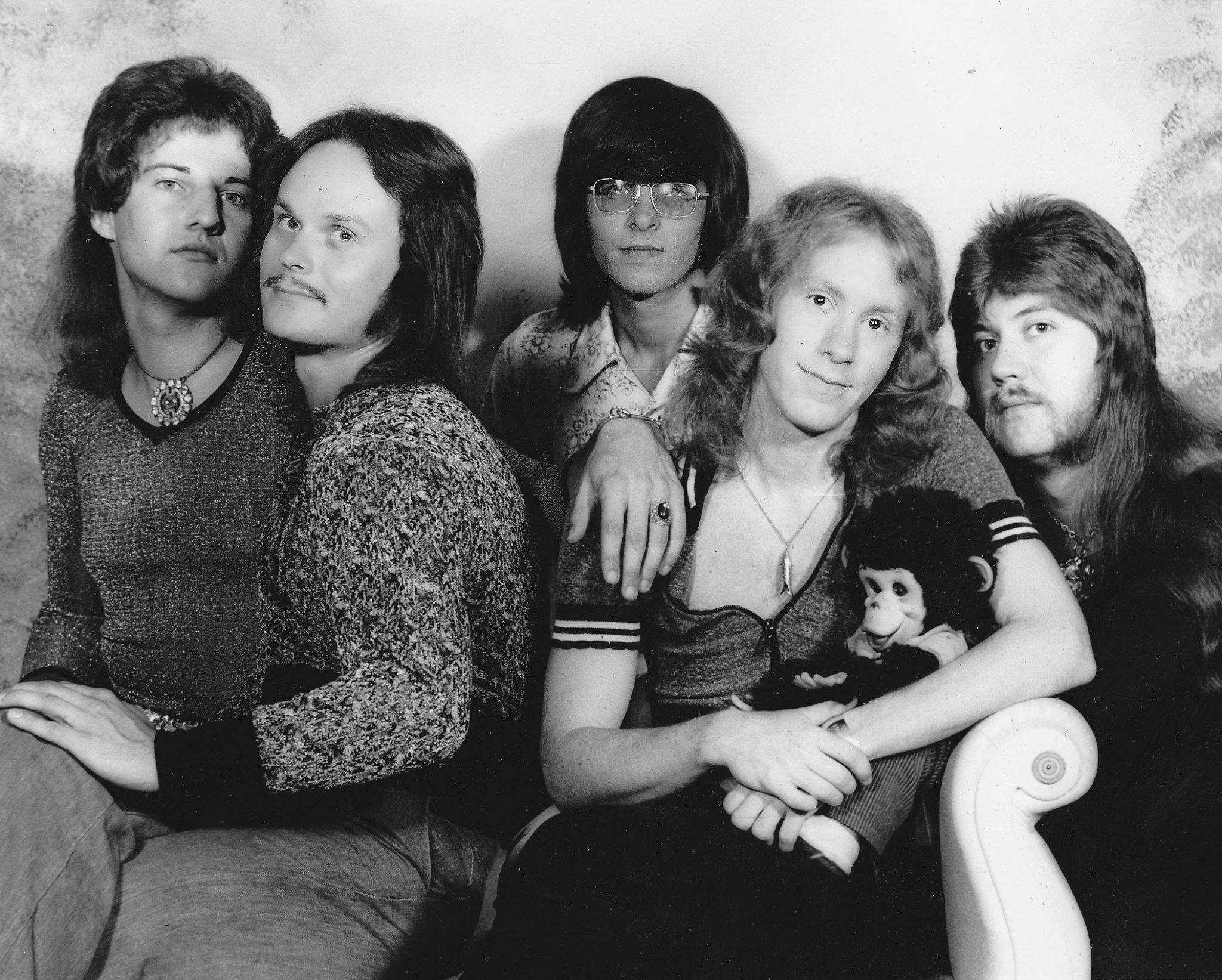
“Nixon dug our version of ‘House of the Rising Sun’ and requested us for the gig”
R.D Francis: Do you see Frijid Pink as a rock ’n’ roll band mislabeled as a heavy metal band, as result of your reimaging ‘House of the Rising Sun’ and its subsequent chart success? Do you consider the song a blessing or a curse that damaged the band’s career?
Rick Stevers: You know that song is funny that way: it’s both. I kind of hate that song was our biggest hit song, as we had other songs I deemed of a much better quality and actually in a different direction, such as ‘A Song For Freedom’, which should have been an even bigger hit. When I put the band back together in 2008, I had a lot of people complaining about the new material not being heavy enough or not having any wah-wah like our hit from all those years ago. If those people heard the direction of the band, originally, back in the early ’70s, they wouldn’t have asked that question. The last song we released was ‘Music for the People’ and that song was definitely no ‘House of the Rising Sun’ by any means because there were no screaming guitars. In fact, we had Dawn [Thelma Hopkins and Joy Vincent Wilson] from Tony Orlando and Dawn [a popular U.S. Top 40 act in the early ’70s] singing background for us before they went with Tony Orlando. That song, I think, wow, it was the best quality of anything we had put out.
Unfortunately, all of that coincided with the guitar player and singer, Gary Lee Thompson and Kelly Green, leaving the band. They didn’t like the gospel-style of the song that [newer member] Harry Phillips developed. So they went off to form a band called Bullfrog [reported in ‘Billboard’ on April 3, 1971]. And the label pulled our release and that was that with London Records. And we never heard again from Bullfrog, either.
I want to get the fans’ misconceptions on the origins of the band’s name out of the way. It’s not a euphuism for a woman’s vagina, that is, that women are cold-hearted.
It simply means “cold excellence”, period. If you look up the meaning of the color pink: it symbolizes universal love; of friendship and inner peace. The genesis of the band’s name was my mom Clara—who, ironically, I had to fight in court for name rights, years later, in 2006, when I decided I wanted to put the band back together. Anyway, she suggested “Frosted Pink” because, after myself and Dan Yehlely—who was with the band for a short time before being deployed to Vietnam—got pink paint in our hair and on our clothes after painting my parents’ bathroom. When the subject of a name came up again, sitting in my parents’ kitchen, it was Tom’s sister Judy, inspired by the Frigidaire refrigerator, who came up with the idea of replacing “Frosted” with “Frigid”. Then my dad chimed in with the letter “j” instead of the “g” because it “looked German”, and hipper, I guess. So there you go, no female body part inspired it. Just paint and a refrigerator!
What can you tell me about the then unknown Led Zeppelin opening for Frijid Pink, around the time of releasing their debut album?
That was one of two shows we did at ‘The Grande Ballroom’. No one knew who they were at that time. At that time, they were just some band from England, opening. We were up in the dressing rooms flirting with the girls. It was some band we knew about—they were just coming out from being known as the New Yardbirds—but didn’t care to listen to because, again, no one stateside knew who they were.
As you review the careers of Detroit bands—no matter how big they later became—everyone of those bands had a steady roster of high school gigs in their past.
We did a lot of high school gigs—both as the Detroit Vibrations and Frijid Pink—as was the norm for Detroit bands at the time. Wow, that’s 53 years, well, counting the Vibrations, 57 years ago—which I started in 1964 in my parents’ Allen Park basement with bassist Tom Harris. The other members were our singer, Billy O’Reilly, and Cary Dayton and Tim Machnik on guitars, and Dan Mason on Farfisa. My parents managed us and got us to the gigs on time.
The Vibrations, with our sets of R&B and Motown hits, got booked quite often; in fact, there was a club called The Chatterbox, and we had a local TV show out of Canada called ‘Swingin’ Time’ with Robin Seymour [of CKLW and WKMH; he also hosted the TV show, ‘Teen Town’]. We were on that show—as the Detroit Vibrations and Frijid Pink—probably a dozen times. We also appeared on this show out of Cleveland, Ohio, ‘Upbeat’, hosted by Don Webster, where we debuted our next single—which still bugs me that it wasn’t a bigger hit—’Sing a Song for Freedom’, a song which I am very proud of.
We also shot a promotional clip in Reno, Nevada, in some cowboy ghost town for U.S. television shows to air [YouTube]. We also did a variety show, ‘Something Else’, which was hosted by John Byner, a big U.S. comedian at the time [YouTube]. Come to think of it, that clip isn’t from the Byner show: we did that on Don Webster’s program, ‘Upbeat’ . . . and the mining town in Reno: that performance was for John Byner’s show. Another appearance we did was on ‘The Lively Spot’, a show that aired on CKLW Channel 9 hosted by CKLW DJ Tom Shannon.
Anyway, we received our Gold Record for ‘House’ on Robin’s show. So Robin had a deal with The Chatterbox’s owner, which resulted in us playing there twenty weeks in a row. That was back in the day when you did five sets per gig; they had a Saturday afternoon and an evening show, as well. So, on Saturdays, we were there all day, with ten sets of music. Plus, we did all of the backyard shows and house parties and all of the high schools in Detroit and out of the area, even in Ontario, Canada. Yeah, the Vibrations kept us very, very busy.
So how did Kelly Green and Gary Thompson finalize the Frijid Pink roster? My understanding is that they talked smack about your band to your father, Clyde?
That’s a true story! They showed up at The Chatterbox in Allen Park and claimed they were better than what we had on stage. As I recall, Tim Machnik wasn’t all that dedicated to the cause and only in it for the girls; Cary’s dad didn’t like him being in a band. There was another member alongside Kelly and Gary: guitarist Dan Yehlely, who I mentioned earlier. Sadly, he was drafted and died in an ambush in Vietnam. He was over there only two weeks. But it was Kelly and Gary joining the band that focused us on writing original material. But they also, eventually, destroyed the band.
I have to add that we debuted Frijid Pink at The Harbor Lights in 1967, which was a regal movie theatre restored to a concert venue. My mom, Clara, and Tom’s sister, Judy, made our pink satin and velvet outfits, and we had our own light show and fog. We did the Vanilla Fudge-version of ‘You Keep Me Hanging On’ to open that second set with our new name. The first set—as the Detroit Vibrations—was our all R&B Motown-set.
There were a lot of big bands in London at the time: There were the Zombies and the Rolling Stones; there was Tom Jones and Engelbert Humperdinck, Lulu and Van Morrison. The only rub is that London didn’t give us the promotional push they gave those bands, but we really enjoyed being part of that family of artists. I’ll always remember the great job London did with the posters. Even today, I am seeing record store promotional posters from that time, now online, that I’ve never seen before. Everywhere they pushed ‘House’, it received heavy airplay.
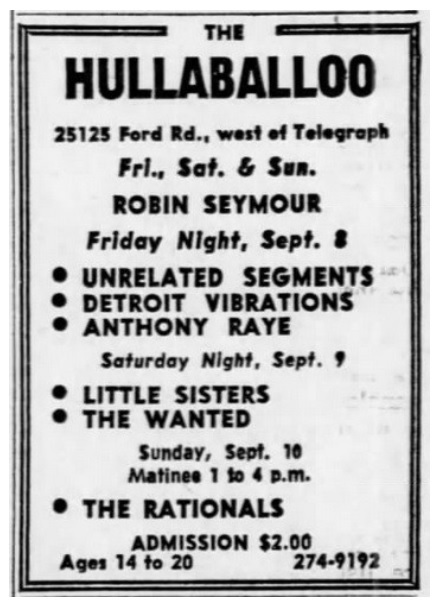
Was it a calculated effort—by the record company or the band—to emulate what Blue Cheer did with Eddie Cochran’s ‘Summertime Blues’, that is, covering a well-known classic song to create a hit single?
Absolutely not; cutting ‘House of the Rising Sun’ was a fluke. We used to buy lots of studio time, but we were a much rehearsed, practiced band. As result, we finished everything we rehearsed and had time left over. Not much, probably about twenty minutes. We were told to do something to use up the time. So me and the guitar player, Gary Thompson, had been working on ‘House of the Rising Sun’ without the other two guys, bassist Tom Harris and singer Kelly Green, and we decided to record it. We did it in one take and it took up the rest of the tape reel to the end.
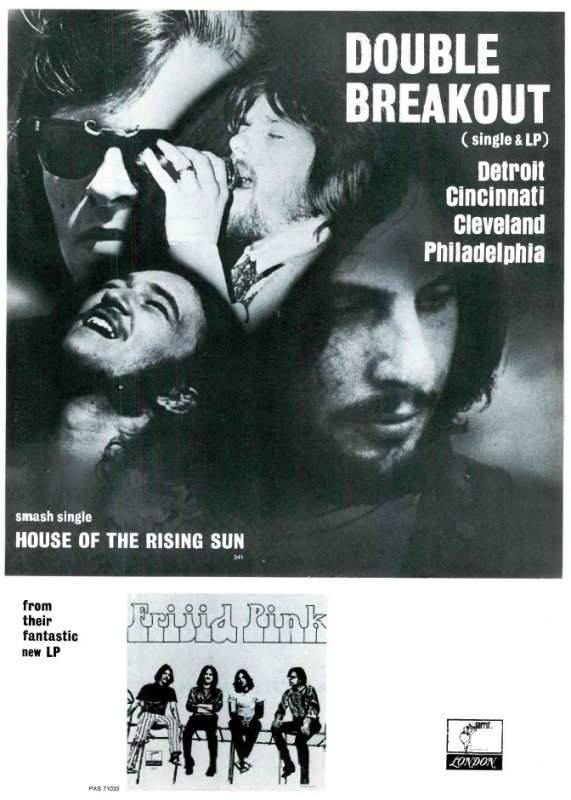
Then, in steps Detroit’s WKNR radio.
Yes. I was dating a girl at the time whose dad, Paul Cannon, was the program director at “Keener 13” WKNR. I had my little Panasonic reel-to-reel tape recorder and I asked him if he would listen to our stuff. Of course, he only wants to hear the first fifteen seconds of every song. So we went through the reel and nothing excited him much. So it was the last song on the tape and ‘House’ was about to play; since it was a cover, I turned it off. Paul insists I turn the tape back on. So the song finishes and he tells me to call my dad [Clyde, an ex-beat cop who managed the band]. My dad, in turn, told Walt McGuire over at London to take ‘God Gave Me You’ off the market and put ‘House’ out as the single.
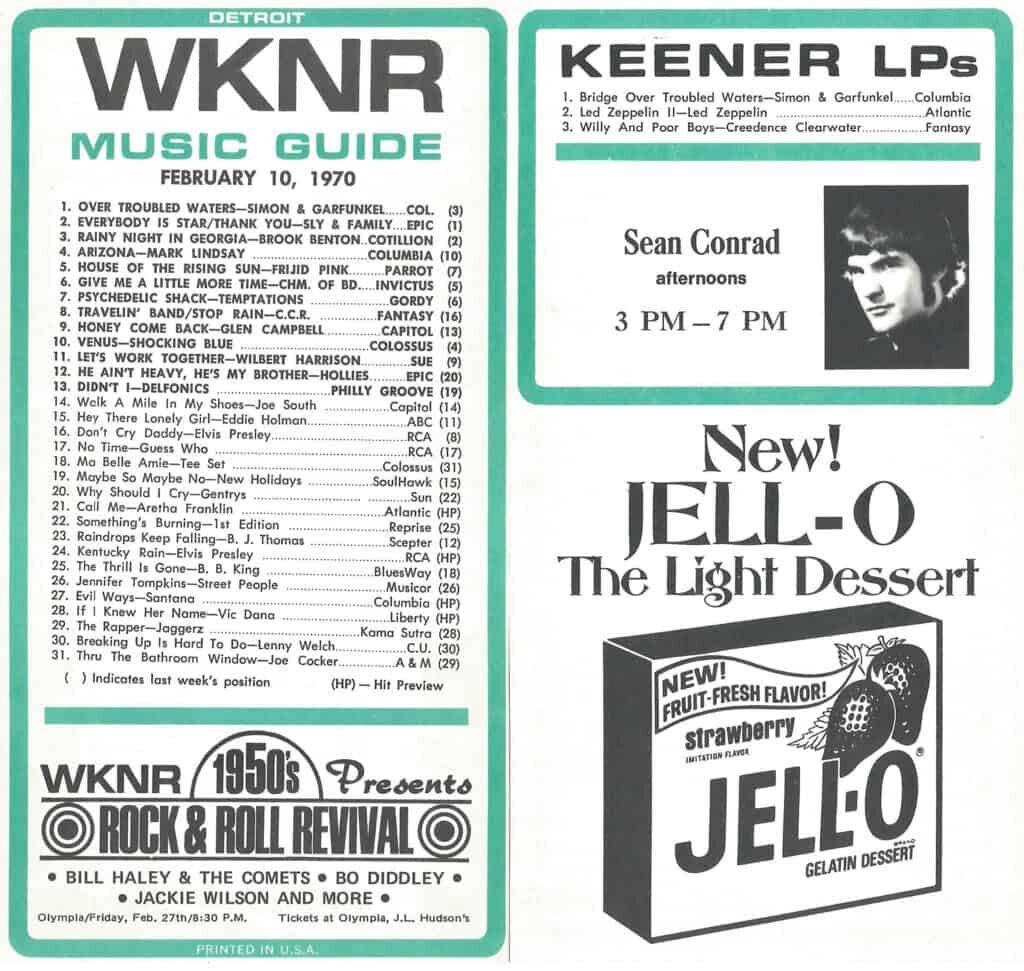
A few weeks pass and I am making out with Paul’s daughter in the car in the driveway; he knocks on the window and asks me to come in the house for a minute. I thought he was angry with the make-out session. I sit down on the couch and he has this little radio on the mantel of his fireplace . . . and ‘House of the Rising Sun’ is playing over-the-air of WKNR. I asked to use the phone and I call my dad, telling him to turn on the radio. And that’s how it started. It is as simple as that.
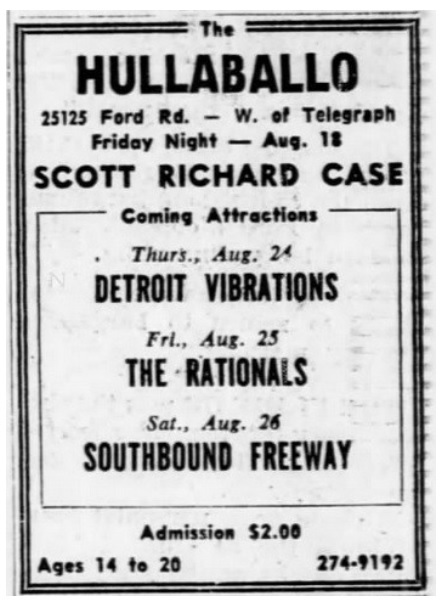
Now, there was a starting point before that, when we played Detroit’s Cobo Hall [for a Danny Thomas St. Jude’s Hospital benefit; he a U.S. comedic-actor and philanthropist] backing up Jerry Jaye, who was also on London Records. Reps from London were there. Jerry’s group didn’t show up, so London asked us to do the gig. Now, we’re rock ’n’ rollers, not a country band. But Jerry insisted not to worry. His two big hits at the time were ‘Let the Four Winds Blow’ and ‘My Girl Josephine’ and he told us they were real easy to do. So we went back to his dressing room, blew through learning the songs, went on stage and did it. Suddenly, Jerry Jaye wants us to go on the road as his backing band. Well, the Vibrations, we’re all still in high school and there’s no way we could do it. So London’s rep, Al Mitnik, tells us that when we get inside a studio, make sure we give him a call and get him a tape. So Al was instrumental in getting the band started.
True to his word: We got Al a copy of an original, ‘Tell Me Why’, and he got the record to the stores and on the radio in Buffalo and Detroit. Then, with ‘God Gave Me You’, he expanded into New York City. Of course, Paul Cannon at “Keener 13” in Detroit got ‘House’ on the air for the first time. So Paul and the radio station each got a Gold Record for it. Speaking of backing artists, in those early days, because we knew our Motown and R&B covers from the Detroit Vibrations’ days, we also backed the Contours, the Dynamics, the Falcons, and the Four Tops on their Detroit stops.
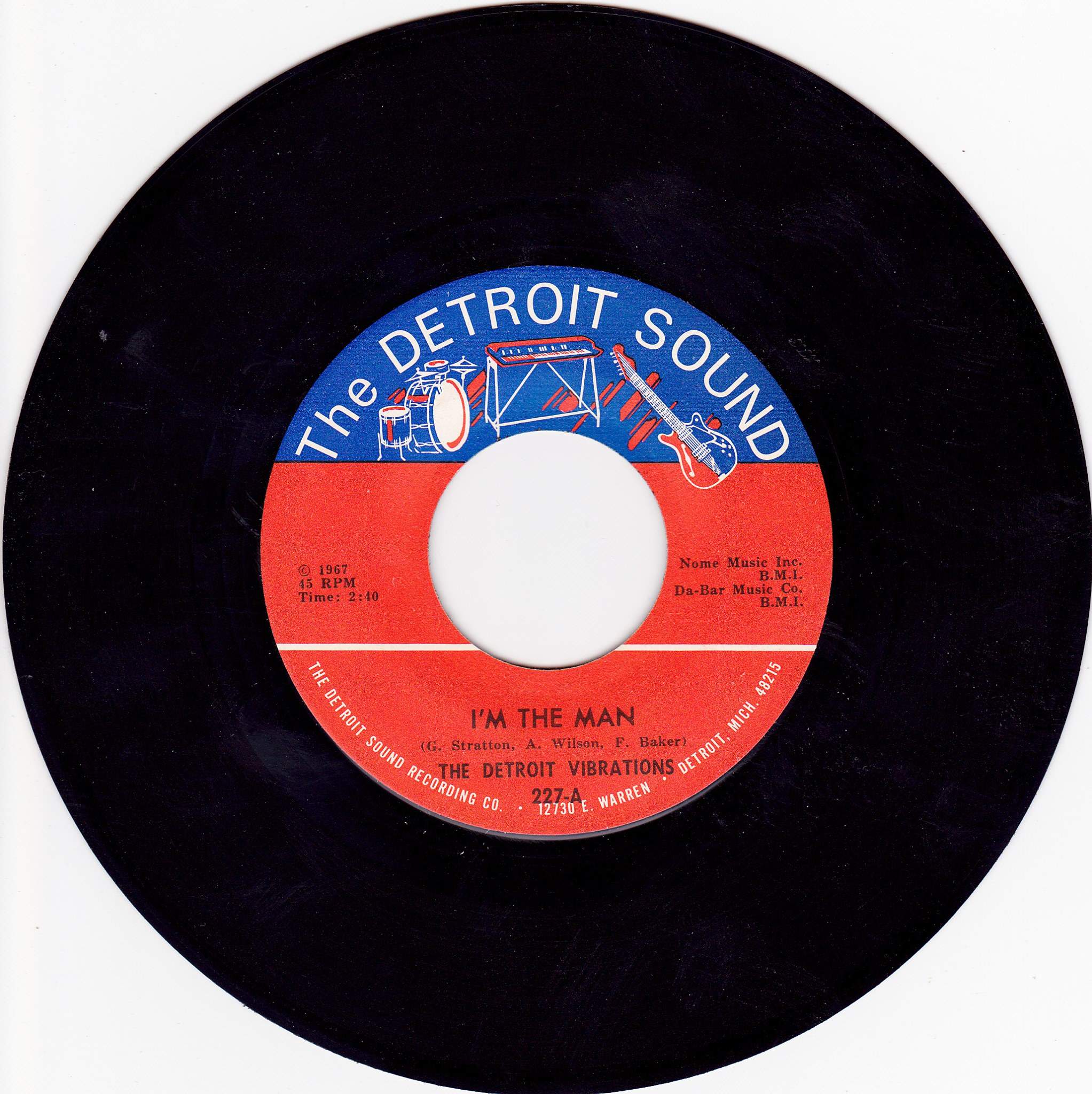
What inspired the recording of ‘Heartbreak Hotel’? What was the reason behind leaving the song off the debut album and releasing it as a standalone single?
Well, that was cut after the album. I can’t recall why we ended up doing it. I think management thought it would be a good thing to do. Come to think of it: Harry Phillips, who came to us from Catfish [another Detroit band; signed to Epic], suggested it and management got on board. Tom Harris’s cousin, Buddy Killen, was part owner of Tree Music, the company that published ‘Heartbreak’.
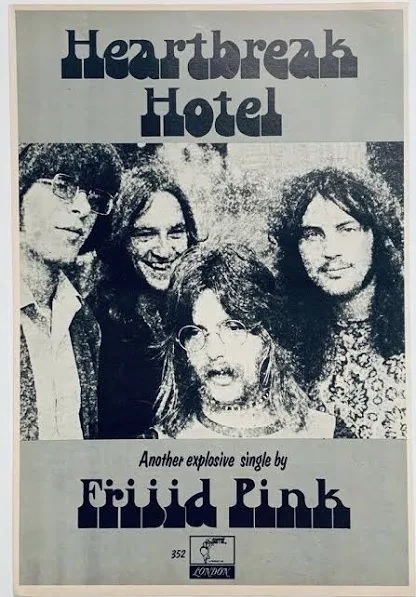
“Our version was on the charts four weeks longer than the Animals”
Of course, we didn’t want to be a cover band. But it I think it turned out alright and it sold over 700,000 copies, which wasn’t a bad thing at that time. But it still paled to the over seven million copies ‘House’ sold. What’s funny is that the Animals sold less than a million of their version of ‘House’—but that’s the one you always hear on the radio, more than ours, even today. In fact, our version was on the charts four weeks longer than the Animals.
What can you tell us about your connection to the Presidency of the United States? You performed for President Richard M. Nixon, four times?
We did. The guests for those shows were amazing. I mean, Sammy Davis, Jr. was there! What a friendly guy he was: he invited me to a party on his personal yacht. What was really funny was that the organizers and the F.B.I agents told us Nixon liked the band. It turns out Nixon dug our version of ‘House of the Rising Sun’ and requested us for the gig. Those shows, by the way, weren’t long shows. On those variety bills you only play two or three songs.
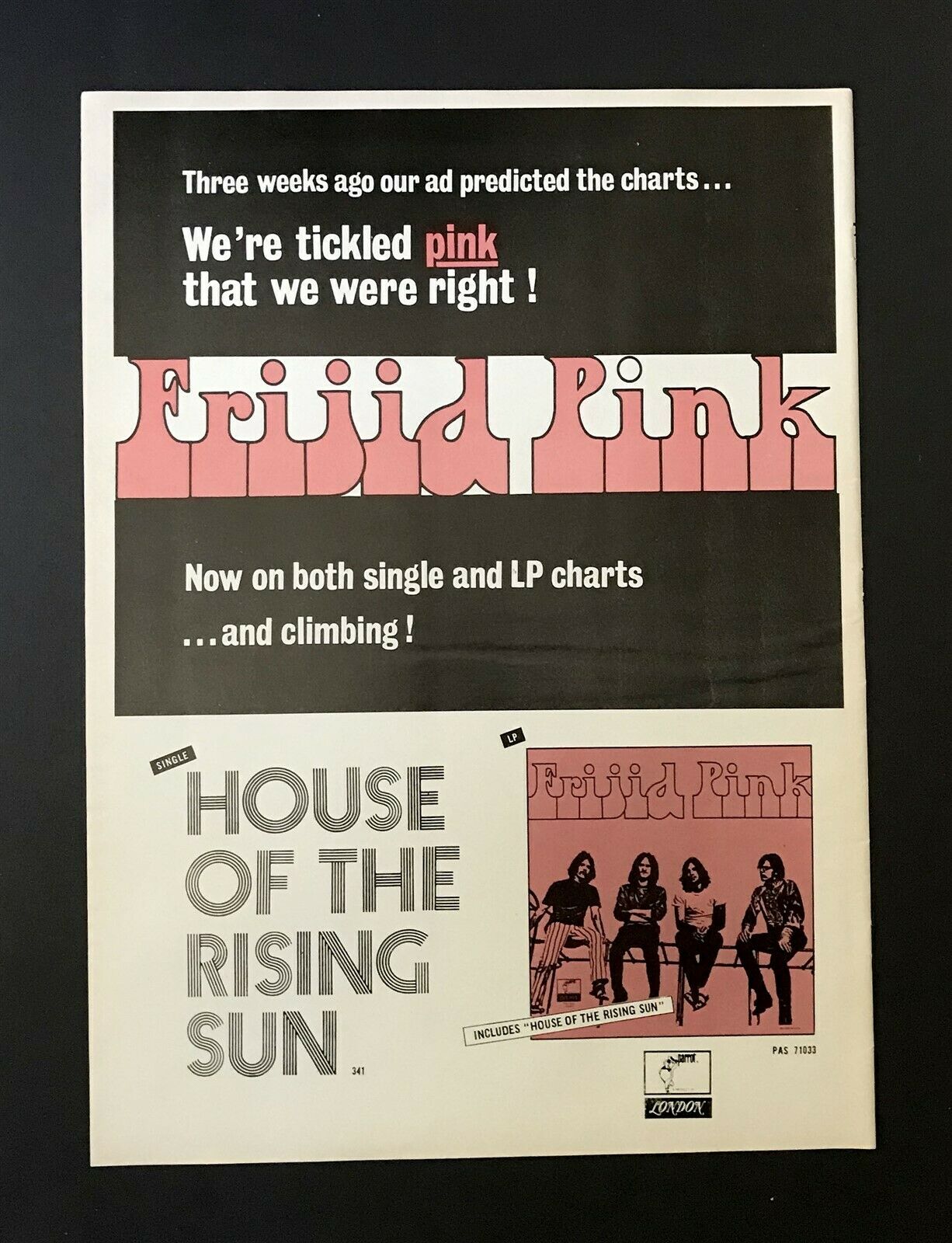
So, for the first Nixon show, we were in Miami staying at the iconic Fontainebleau Hotel. They had this barge just down the street; it had to be as along as a city block. Everyone was performing on this barge—and Nixon actually showed up for that show. It was surreal. When we got to the hotel, the F.B.I agents had the whole place closed off: you had to show I.D. Of course, we’re long-haired hippies and the F.B.I kept stopping us, over and over. Finally, the organizers gathered the band together, stood us in front of the agents, and told them they had to let us in and out. After that, we were told by the agents to charge anything we wanted to the rooms—even hookers. Now, I don’t know what the others did, but I didn’t—the hookers, that is!
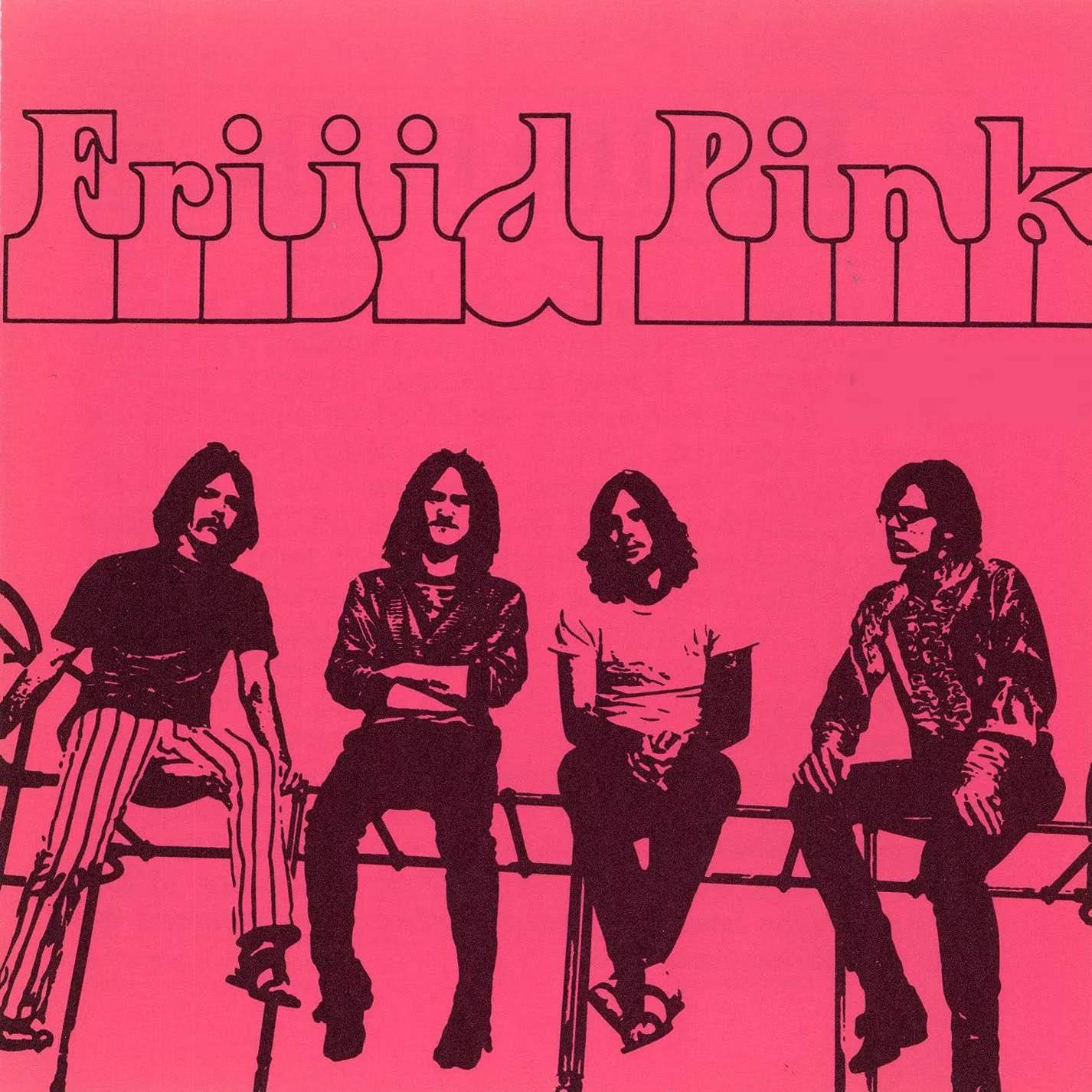
Well, Elvis sent you Christmas cards until his death. So I can believe Nixon liking the band, as well. Good rock ’n’ roll is good rock ’n’ roll. Even Presidents are people.
Yeah, Elvis and the Colonel really liked what we did with ‘Heartbreak Hotel’. It was crazy and I’m just sorry that it ended all too soon. Unfortunately, our management didn’t have what it takes to keep the momentum. I got out of it completely in 1979 with the very last version of the band. I ended up in Toledo, Ohio, where I worked for JEEP’s engineering division for a few years.
I’d like to talk about the bogus version of Frijid Pink—without you in the band—that not only toured, but recorded an album, ‘Inner Heat’, in 2001.
I helped my dad—who was one of our four managers from the old days; those four managers, by the way, were my dad, my mom, then Tom Harris’s sister and her husband, and they still managed to screw it up—put that version of the band together. In fact, my old man owned the rights to the band name. He wasn’t being shifty, well, he probably was. I was underage at the time and couldn’t trademark it myself. I was supposed to get the rights back when I turned 21—and never did. Dad claimed I’d get the rights when he died. Then, when his will was read, my mom Clara got the rights. It took a lot of money and time to get the name back.
Anyway, the people my old man picked for that 2001-version of the band weren’t of the caliber I wanted to play with at all. The singer couldn’t pull off ‘House’ and the guitarist stole every guitar riff from every guitar player that was worth listening to. Plus, the songs they wrote were horrible. So, after a dust up with my dad about the situation, I quit. They got a member from an old Detroit band, Savage Grace [two albums on Reprise in 1970 and 1971], I can’t recall his name, and tried to make a go of it. They failed. One show and it was all over. No album, either.
In preparing for our interview, I gleaned ‘Billboard’ issues and found a July 31, 1971, report that a booking agency out of Dallas was touring a bogus Frijid Pink across the Southeastern U.S. Do you recall that event?
Yes, we couldn’t catch them in the act—and they were doing our whole set list! Back then, most bands weren’t recognized by sight, unless you were the Beatles or the Rolling Stones, so they got away with it.
Another ‘Billboard’ report I read from August 15, 1970, mentioned Frijid Pink replacing Quicksilver Messenger Service at the ‘Festival of Rock’ at the Arizona Coliseum. Do you have any memories of that show or recall why Quicksilver cancelled?
That was the fake Frijid Pink out of Dallas. We never played Arizona. In fact, we were in Jacksonville, Florida, in August 1970! I remember it vividly because it was my 21st birthday. I spent my birthday in one marathon drive back to Detroit from that show. So, yeah, it wasn’t us in Arizona.
Taking a break in 1979 after four years of touring since 1975 after the release of ‘All Pink Inside’, Frijid Pink reunited. You and founding bassist Tom Harris recruited fellow Detroit musicians Arlen Viecelli from Salem Witchcraft on lead vocals and Ray Gunn from Virgin Dawn on guitars. Both of those bands did lots of festivals throughout Michigan and the Midwestern U.S.
What’s funny about that era is none of that 1981 material was ever copyrighted. Two of those songs did end up on a German compilation that came out on Repertoire Records in 2011; one of those songs was ‘Bad News’, which I did copyright. Those ’81 recordings, a few of them could have been hit songs. The excuses from the labels were very lame and very poor. A lot of it had to do with our management; they didn’t know how to manage a band or speak to anyone in the business. So, it just got tossed in the can and that was that.
An album that gets passed on over in our discography is ‘The Beginning Vol. 5’. Prior to the Repertoire release, that was our first compilation. Deram put that out in 1973, with five songs each from our debut and ‘Defrosted’. It came out in Germany—after the release of ‘Earth Omen’ with MGM/Lion and before ‘All Pink Inside’ on Fantasy—but I believe it was available as an import in other parts of the world. I wasn’t aware of that Deram album until years later. I had nothing to do with either; it was all my old man working with Repertoire, I believe.
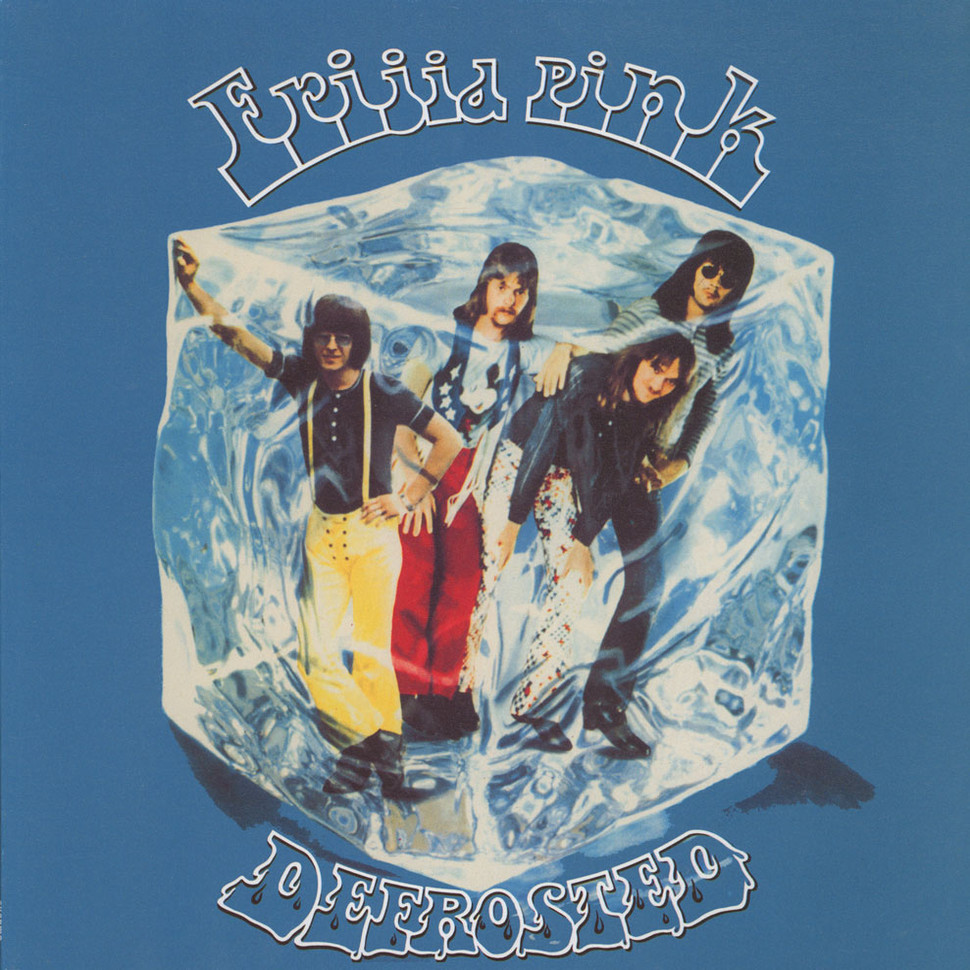
What inspired your abandoning the heavy psychedelia of the first album to create the harder blues of ‘Defrosted’, then the prog-rock leanings of your third album, ‘Earth Omen’? Was the change purely artistic or by record company insistence?
That period and the change between those two albums were based more in the creative process. I was told repeatedly from the beginning that all drummers looked the same and that I needed something to stand out. So I got into this crazy phase of trying to do stuff other drummers don’t—which I got slammed for by a couple of rock writers. Plus, we also had two new members, which are no longer with us: Jon Wearing committed suicide in 2009 and Craig Webb died a few years back. I remember writing all of those songs in my first apartment, ‘Mr. Blood’ in particular. The change on ‘Earth Omen’ was result of Jon and Craig being a different, higher caliber of musicians. So it came out of that infusion of talent. We left London at that point and MGM’s subsidiary rock label, Lion, issued that album, but they had nothing to do with the changes the band made.
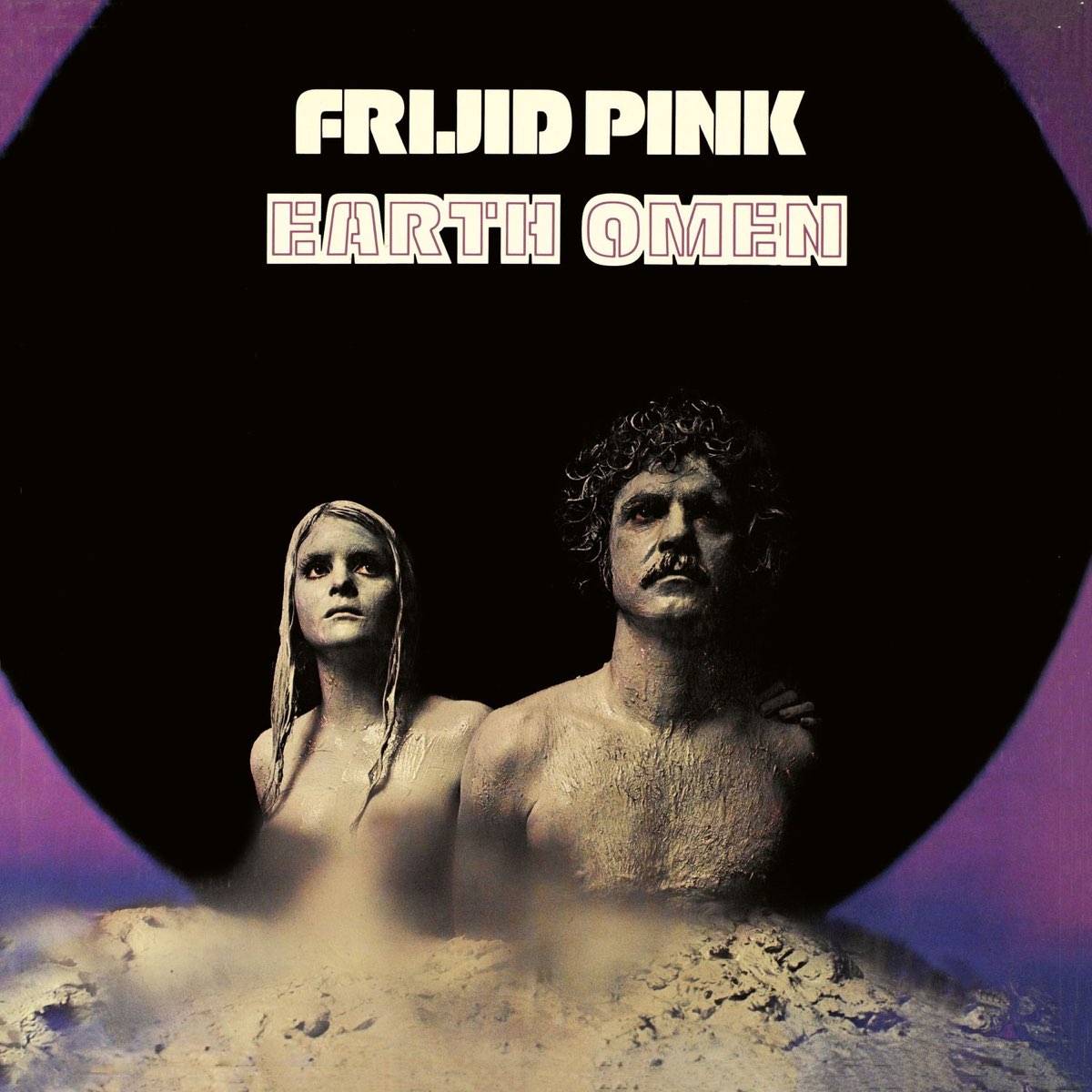
What inspired the straight, blues-rock change-up on your fourth and final album, ‘All Pink Inside’—which is a shift back to your roots from the first album?
Well, by that point it was another, whole new band, again, with Jo Baker on vocals and Larry Popolizo on bass, as well as a whole new label, Fantasy. Tom Harris wasn’t even with us at that point. Guitarist Steve Dansby from Detroit’s Cactus recorded with us during that period. But we never released that material and didn’t play out live.
We got slammed by the fans over ‘Earth Omen’ and ‘All Pink Inside’, as they felt we weren’t loyal to our original sound from the big hits. What they didn’t understand is that bands, like people, evolve. The Beatles’ later material didn’t sound at all like their first few songs. Look at the Rolling Stones with ‘Sympathy for the Devil’ and ‘Heartbreaker’ compared to their ‘Satisfaction’ days. Frijid Pink was doing the same thing: evolving into something different, something bigger and more mature. If you listen to ‘Music for the People’, that song was more commercial than anything we did at that point. It was a hit record, in my opinion. If Kelly Green and Gary Ray Thompson didn’t quit right when the record came out, I believe it would have gone to the top of the charts. That was while we were on tour in March 1971. Kelly and Gary walked out on the band in St. Louis [Missouri] and hitched a ride to Detroit. They were just impossible to work with some days.
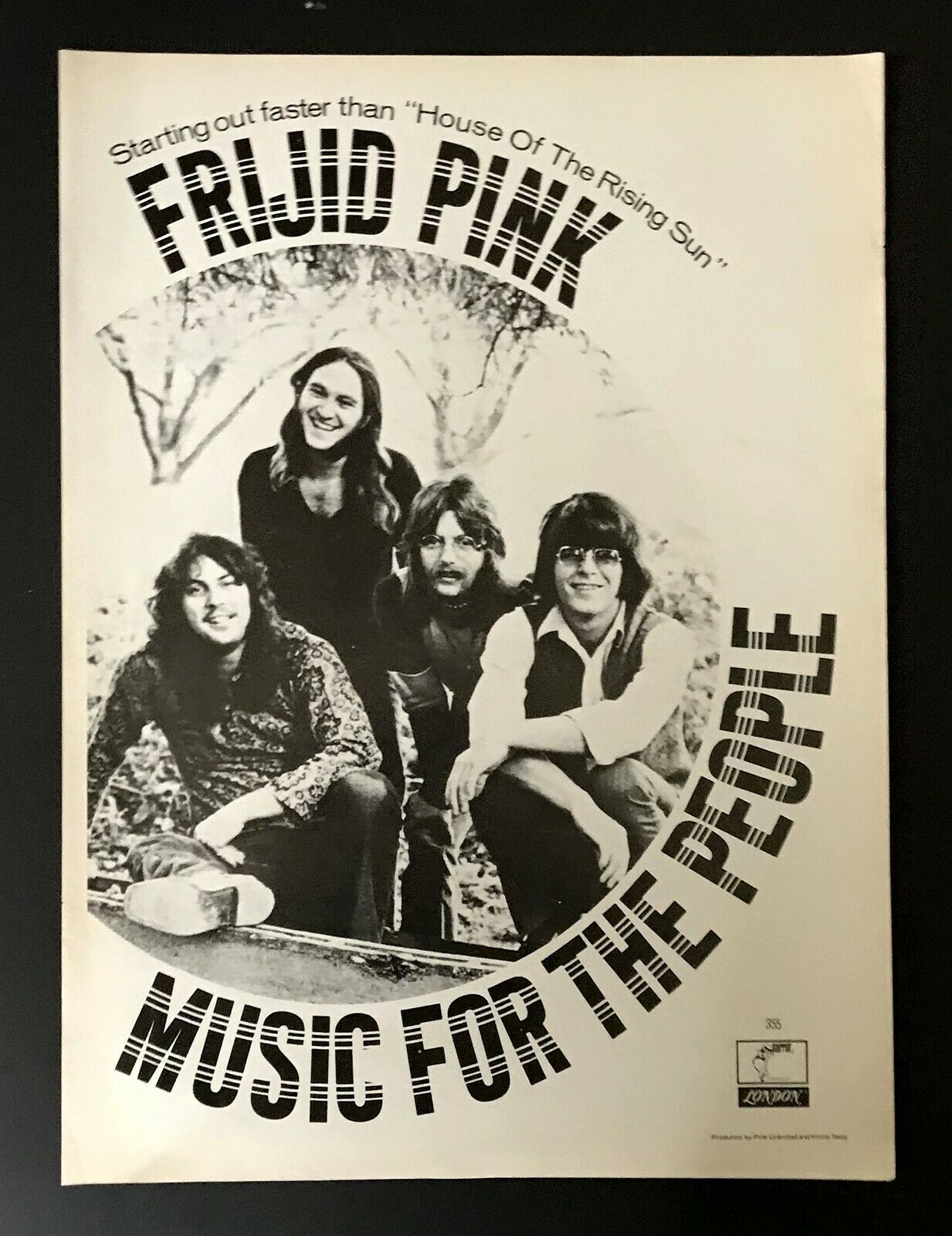
It is funny how the massive success of ‘House’ caused the original band’s break up. It’s like the song has a curse or something. The story behind the Animals’ version is that Alan Price, who wrote the new arrangement, had his name added to the writing credits, which resulted in the other members getting nothing. So, the Animals split over it.
But getting back to the press: they were always on us. Even though we were at it since the middle ’60s, ‘Creem’ magazine had a problem with us and there may have been a bit of scene resentment that Frost, the MC 5, SRC, and the Stooges were struggling, while we had this almost instantaneous, worldwide success. Bob Seger struggled, as well. The bands themselves were still cool with us, but we were still outsiders on the scene, to a degree. We are not in Cleveland’s Rock and Roll Hall of Fame, either. We’ve been eligible since 1995, but I guess being Michigan’s first progressive-rock band with a gold record doesn’t mean much.
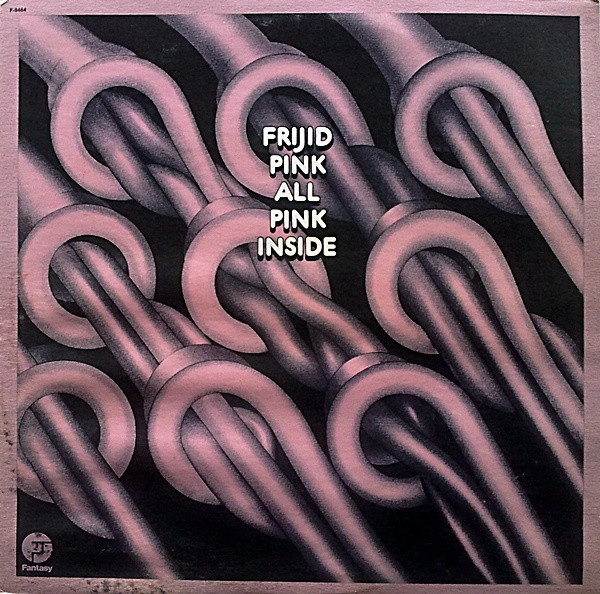
Speaking of past Frijid Pink members, such as Steve Dansby of Cactus: Wayne Kramer of the MC5 and Glenn Frey of the Eagles? And George Martin of the Beatles’ fame almost produced the band?
Yes. Wayne was out of the MC5 and we were looking for something new. Even though we were without a label after our last album, ‘All Pink Inside’, we still toured up through 1979. By that point, Frijid Pink consisted of this band, Outer Drive, that my dad managed—with me on the drums [the roster was Bob Gilbert on guitar and vocals, Terry Stafford on bass, and Ray Knapp]. Anyway, Wayne was arrested for child support or some stupid thing back then and didn’t last long. Before that, there was Glenn Frey.
That would be from Glenn’s Detroit days with the Mushrooms, as well as co-writing songs with Bob Seger?
Yes. Glenn made a couple practices, but our management felt his style wasn’t right for the band. Look what happened to him. As for our connection to the Beatles: Our management was so stupid and greedy that, when London Records offered us the Beatles’ producer, George Martin, for twenty percent, they turned him down. For a lousy twenty percent cut. Twenty percent of nothing is nothing. Can you imagine if George Martin produced us after the first album, what we could have done in the studio with ‘Defrosted’? And with the success we had, the sales at the time, with his name attached to us, we would have gone over the top.
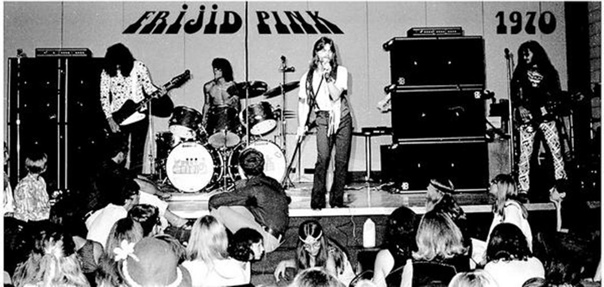
What can you tell us about the dust up between Frijid Pink and Steppenwolf during a tour?
The John Kay and Steppenwolf gig was this ‘Toys for Tots’ charity show we did in West Virginia. It was an afternoon and evening show. There was this musician’s opinion back then that mic’d small amplifiers sound better than mic’d huge amps. So John Kay set up with these small amps. Against our bigger equipment, we just wasted them. Now, they weren’t acting very friendly to begin with. Of course, as a Detroit band, we are friendly with everybody. Again, back to the meaning behind our name you mentioned earlier: it’s all about harmony. Anyway, I remember a knock on the door from John Kay. He comes in, apologizing for the way they acted towards us—then asks if they can borrow our equipment for the next show! Of course, we loaned it to them, full knowing they don’t know the equipment we used or how to run it. It’s funny because we thought we’d get blown off stage—it’s Steppenwolf, after all. And we killed them on the second show, as well.
In addition to Steppenwolf, we toured a lot with the Guess Who, and believe it or not, Paul Revere and the Raiders, as well as Ides of March. There are just so many stories and so many bands to remember, such as Country Joe and the Fish, the Rascals, and Jay and the Americans. We even shared a stage with Neil Diamond. In those days, you were on these package tours with probably ten bands. No one was a support or a headliner: it was just a show with ten bands, that’s how it was done back then. But Frijid Pink has been back together since 2008—with a roster lasting longer than the original band—and we sound better than ever.
R.D Francis
Since their 2008 reformation—with Rick Stevers as the sole original member at the helm—Frijid Pink has released ten albums, overall. You can enjoy Frijid Pink’s ever-growing, new millennium catalog of music at Apple Music, ReverbNation, and Spotify. Physical media fans will discover a wealth of new and vintage Frijid Pink vinyl and compact discs on Amazon.
This interview was edited for length and clarity.
Headline photo: Frijid Pink 1970 | Willard Alexander Inc.-management | Public Domain
All photo materials are copyrighted by their respective copyright owners, and are subject to use for INFORMATIONAL PURPOSES ONLY!

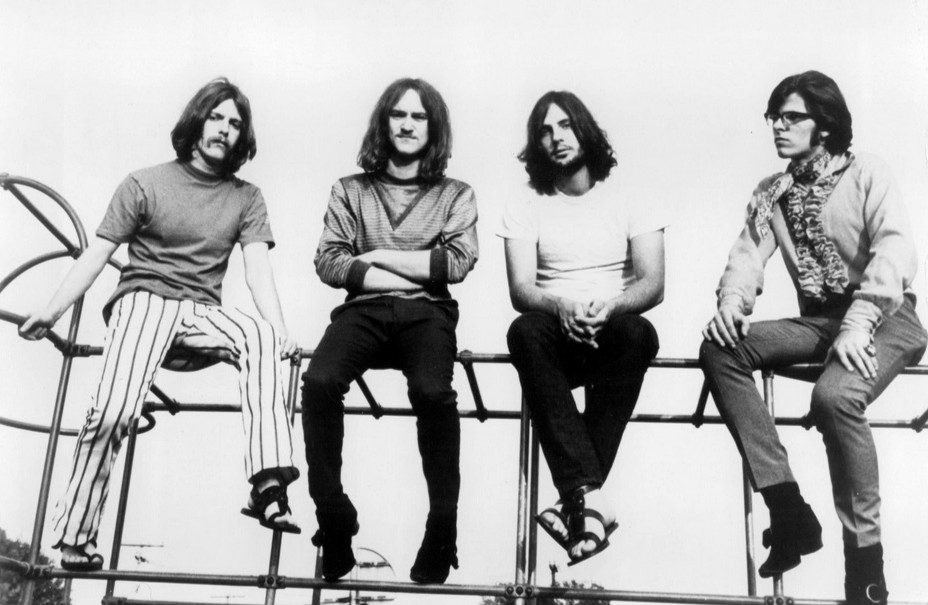



Heavyn, a Detroit band that never made the big time — with connections to Frijid Pink. What’s it all about? Read on! https://garagehangover.com/heavyn-of-dearborn-michigan-two-man-blues-b-w-children-of-the-woods-1971/
Good and quite amusing interview. Rick Stevers sure is touchy on the band’s legacy and “what could have been” but those are some fun stories he told. Good band and they added to Detroit’s legendary reputation as one of the great Rock capitals in the world.